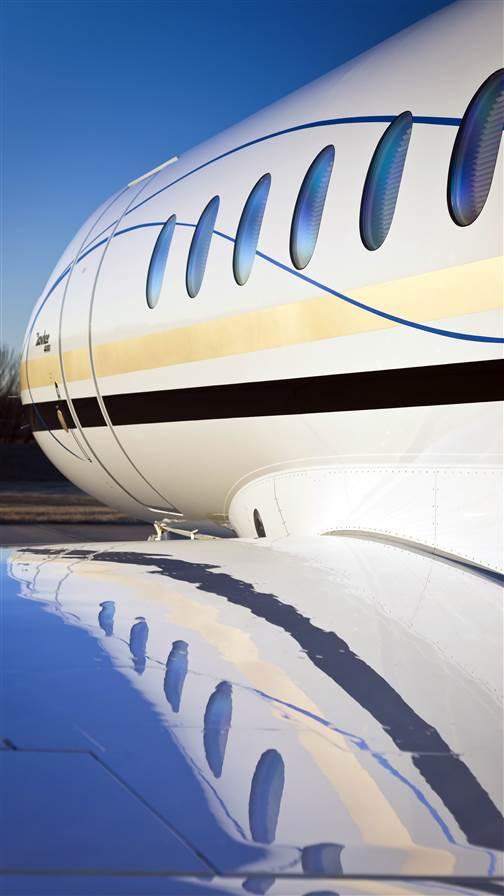From the Editor: Going upscale
Textron makes its moves
Because they’re built for speed, Citation Xs have relatively low frontal drag, and huge Rolls-Royce AE300 engines. The latter make them easy to spot on the ramp, but that small frontal area comes with a penalty. To have the much-touted “stand-up cabin” in a fuselage that’s necessarily slim, designers have to lower the floor—enough that the hypothetical six-foot person can stand tall in the cabin without fear of touching the ceiling. The easiest way to do this is to drop the center aisle a few inches. This gives a trench that passengers navigate to move around the cabin. It’s a common design solution among smaller business jets, but it is restrictive in that passengers have to step up and down to get in and out of the seats. That, and those sitting in side-facing divans may find their legs dangling above the aisle, sort of like Lily Tomlin’s “Edith Ann” comic character sitting in her oversize chair.
For those and other reasons, dropped aisles have become obsolete in globe-spanning Bombardier, Falcon, and Gulfstream jets. To keep up with the competition, Textron is apparently going “flat-floor” with its new Longitude (the X’s obvious replacement), even though it’s a little (Mach 0.84) slower. Ditto the Latitude and, come 2019 or 2020, Textron’s upcoming flagship, the Hemisphere. With the 4,500-nautical-mile, Mach 0.90, fly-by-wire Hemisphere, Textron will be angling into truly apex-bizjet territory, and with a competitive, $35 million price tag too.
Textron’s Scorpion light attack/surveillance military jet and its recently announced SkyCourier turboprop twin (which also has military applications as a “Combat Caravan”) also show that Textron is moving upscale in the marketplace. Its upcoming 1,600-nm, $4.8 million Denali single-engine turboprop is aimed at the Pilatus PC–12’s unchallenged hold on its niche, and may even compete with Textron’s C90GTx for those wanting the economy of a single engine for a price “only” $1 million more.
It makes you wonder about the direction of Textron’s Beechcraft offerings. King Air 350i/ER and 250 models, with 45 and 28 annual 2017 deliveries, seem healthy enough. But the company must surely sense flashing-amber annunciator lights with its new G36 Bonanzas and G58 Barons, with their 13 and 23 deliveries last year. Those are pretty low production rates. Will Textron’s new moves spell the end of the iconic Bonanza? Say it ain’t so!
Email [email protected]




